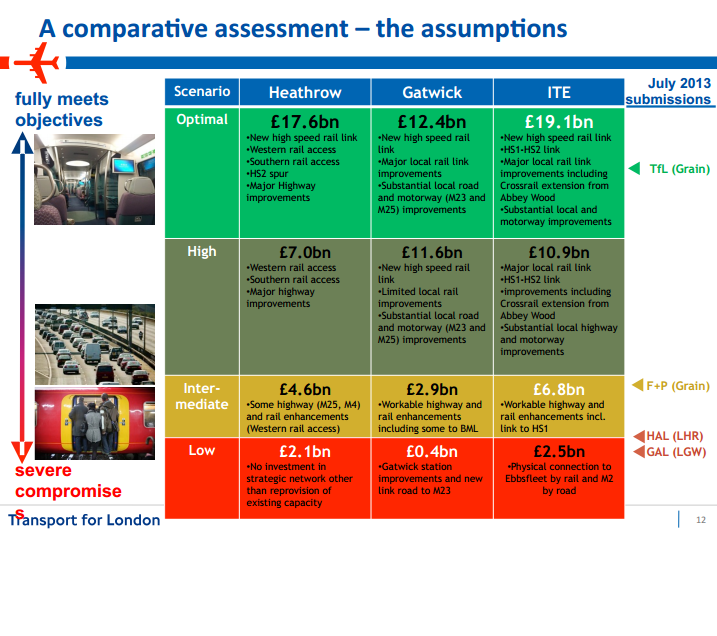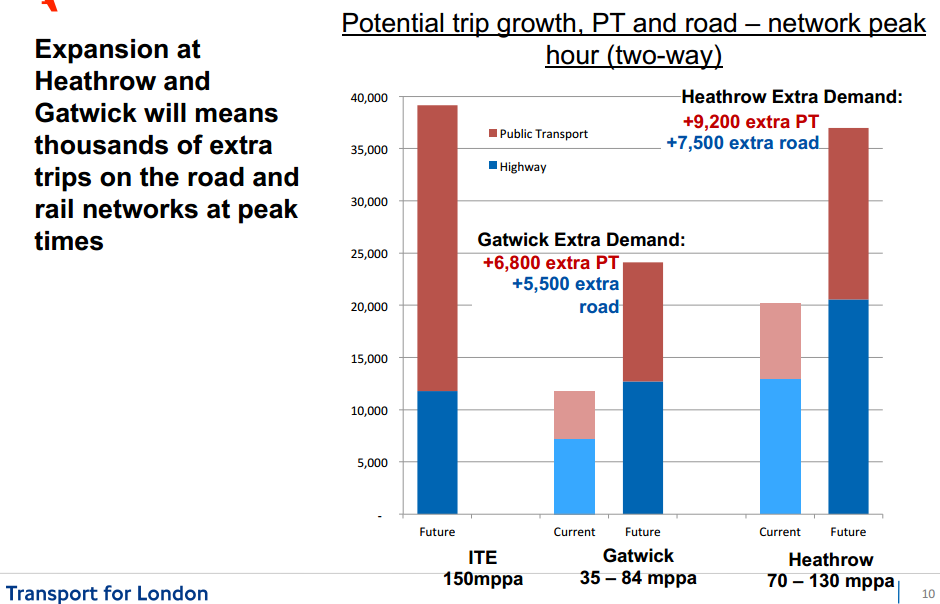The area’s road network would be left ‘better than or the same’ if a second runway was built at Gatwick according to airport bosses.
As part of its bid to be selected for expansion by the Airports Commission in 2015 the airport revealed its planned infrastructure improvements this week, which it says will make it ‘road and rail ready’ by 2021 for a new runway.
Hugh Sumner, Gatwick’s senior transport advisor who worked on theLondon 2012 Olympics as director of transport for the Olympic Delivery Authority, said they hoped to create a regional transport hub to help drive economic growth across the entire area.
A second runway at Gatwick and a third runway at Heathrow are options shortlisted by the Davies Commission on airport capacity in the South East of England.
It is due to give a final recommendation to central Government after next year’s General Election.
Gatwick has previously said that a new runway could be delivered by 2025 if chosen.
Works on a new junction on the A24 south of Broadbridge Heath are due to start on Monday June 9 and could last 18 months, while roadworks have been ongoing on the A23 near Handcross since 2011.
Asked about concerns over the local road network’s ability to cope with any additional strain Mr Sumner said: “Our commitment is we are going to leave the road systems working better than or the same in 2050.
“If you have a better road system coming through, better junctions and better flows then a second runway is the obvious choice.”
He told the County Times they had done extensive traffic modelling to show the road network surrounding the airport had ‘a huge amount’ of capacity and resilience.
Meanwhile Gatwick said planned improvements could see a doubling of rail capacity with 10,000 extra seats to London every hour.
Through the new Govia Thameslink Rail Franchise, due to take over from Thameslink, Southern, and Great Northern franchises, extensive changes are planned to the Gatwick Express service by 2016.
Mr Sumner said they hoped to create an ‘integrated transport hub’ that would blend together road, rail, coach, and bus passengers to create a ‘superb Gatwick Gateway’.
He said they would ‘leave a different transport proposition for the future, driving a ribbon of economic growth north and south’.
“I firmly believe a second runway is the best thing for the region and the local community and the nation just as the Olympics was for London,” Mr Sumner added.
“I think the important message to them is we care as an enterprise. Gatwick cares. It’s the right thing for the community, we will stand by them and work with them.”
He continued: “Gatwick will be road and rail ready for a second runway by 2021 with no additional cost to the taxpayer. The ease at which these improvements can be delivered adds yet more weight to the obvious case for a new runway at Gatwick.
“Gatwick already has the highest proportion of passengers travelling by public transport and these improvements will help encourage even more. We want 60 per cent of our customers to use public transport, comparable with the best globally and better than any UK airport.”
But the Gatwick Area Conservation Campaign (GACC), which has opposed a second runway at Gatwick, questioned the contents of the transport document.
Brendon Sewill, chair of GACC, said: “The document published by GAL [Gatwick Airport Limited] today contains ten per cent inaccuracies, 20 per cent inconsistencies, and 50 per cent wishful thinking.
“GACC will be undertaking a comprehensive study of the impact of a new runway on road and rail congestion and will be publishing it later this summer.”
The group is urging town and parish councils in the areas that might be affected by a second runway to organise public meetings to help residents understand the airport’s current consultation.
The ‘Airspace Consultation’ was launched by Gatwick last week and presents several options for departure routes, which the airport says is part of a wider programme of changes needed to deliver the UK Future Airspace Strategy. These are legally required to come into effect in 2020.
But one of the options would see the continuation of a trial flight path which started sending aircraft over Warnham and surrounding villages in February, much to the anger of residents who say the tranquillity of countryside life has been shattered by near-constant aeroplane noise throughout the day.
Communities Against Gatwick Noise and Emissions (CAGNE) was set up in response and has organised a drop-in session for residents to view large-scale maps within the airspace consultation documents at Warnham’s Comrades Club on Thursday June 12 from 7pm.
It is also looking at the possibility of organising similar events in Rusper and Slinfold before the consultation closes in mid-August.
Sally Pavey, chair of CAGNE, described how the flow of planes overhead, from 6am to 10.50pm, was having a massive impact on residents’ mental health and wellbeing.
She said that any of the new consultation options would see planes flying over houses which had previously not been under a flight path where homeowners had paid a premium for their property not to live under a Noise Preferential Route (NPR).
She added: “We will battle on because at the end of the day we have rights to peace and tranquillity because we have lived there for 35/40 years.
“We should have rights not to have this forced upon us.”
For more information visit
www.gatwickairport.com/gatwickairspaceconsultation
or see www.facebook.com/CAGNE.Gatwick
.
.
.



